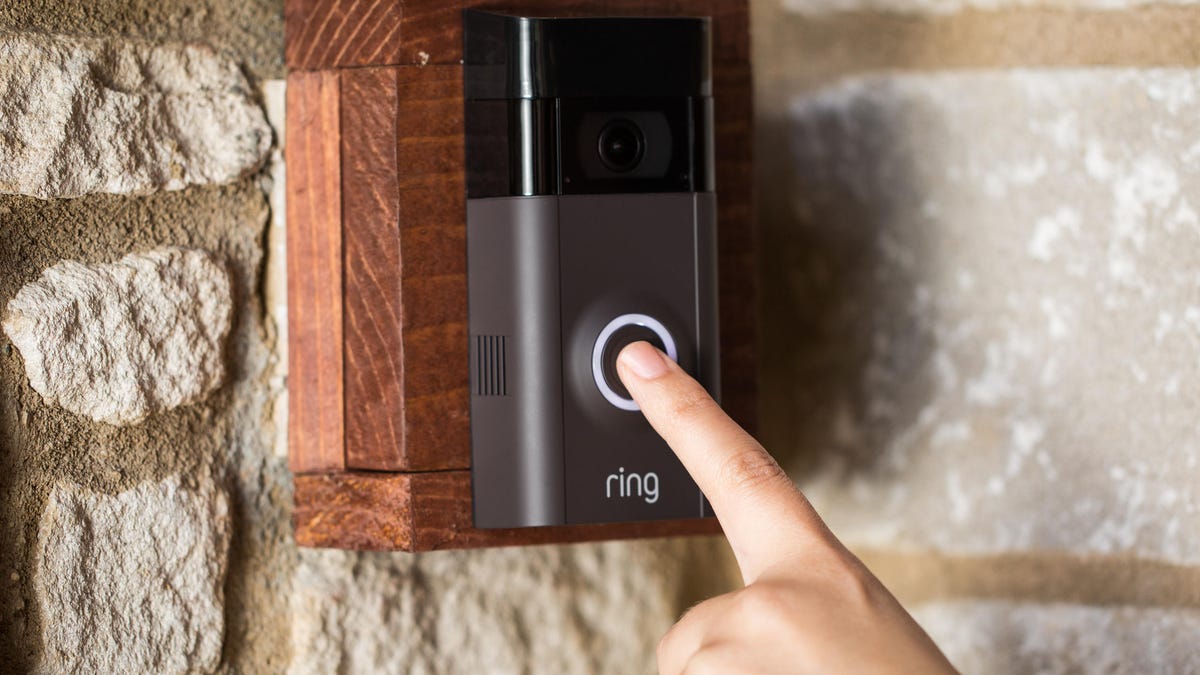Ring doorbell and police surveillance: There's a new way to opt out of video requests
Ring is giving its customers more control over their account security with the new Control Center feature in its app.

Ring is helping you take control over your videos and your account.
Hoping to protect customer accounts from hacking address concerns over the sharing of customer videos with law enforcement agencies, Ring in January announced a new privacy-focused feature for its mobile app.
Rolling out to user accounts now, Control Center provides a centralized place for users to monitor the devices and shared users on their account and opt-out of receiving video requests from local police departments. Ring customers just need the latest version of the Android or iOS app installed on their device to get it.
Opt-out of police requests with just a few taps.
Opt out of police requests
Currently, Ring users will receive a request whenever their local police department or sheriff's office is seeking information or evidence in an investigation. It's a voluntary request, so you don't have to submit anything if you don't want to.
However, you can disable law enforcement video requests completely for your Ring account by following these steps:
1. Open the Ring app and slide out the side menu.
2. Select Control Center.
3. Tap on Video Requests under Community Control.
4. Slide the Video Requests switch to the Off position.
5. Confirm the change.
Just remember that turning off the alerts doesn't mean law enforcement can never access your Ring videos. If you share any of your videos with Ring's Neighbors network, then it's fair game for the police to access, view and download. The police also can acquire your videos if they acquire a warrant.
Curious if your local law departments have joined Ring's Neighbors app? You can view Ring's Active Agency Map by scrolling to the bottom of the Video Requests page and tapping on the map.
Don't leave Control Center just yet
Control Center adds more than just a switch to stop you from receiving police requests. It's also where you can go to manage the security of your Ring account and view who or what has access to it.
Use Ring's Control Center to remove devices, services and other users.
The Authorized Client Devices section will show you every phone or computer that's currently logged into your Ring account. You can't remove individual devices, but you can force every device -- including the one you're using to view the list -- to sign out of your Ring account. It would be nice to add the ability to remove individual devices, especially for those instances when you forgot to sign out of a phone you've just upgraded from.
The Shared Users section only applies if you share your Ring account with a roommate or family member. Use it to manage their access to specific devices on your Ring account, send invites to new users, or revoke someone's access.
The Linked Accounts section will show any outside services, such as Amazon's Alexa or the automation website If This Then That (IFTTT), that are linked to your Ring account. Unlike the devices section, you can individually remove a service, but not remove all connections at the same time.
Ring also provides more information about how it handles your information and data, plus details about the company's relationship with law enforcement agencies.
One of the first steps you should take to secure any of your online accounts is to use two-factor authentication. Of course, that's after you've selected a password manager and started using unique and complex passwords for your accounts. And just to be safe, you should lock down your wireless account to keep your phone numbers safe.

